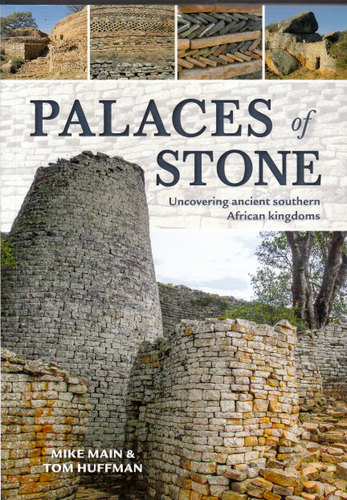
Published by Struik Travel and Heritage
Scattered over substantial portions of northern South Africa, Zimbabwe, Botswana and Mozambique are a series of, often beautifully decorated, palaces and citadels whose existence points to a chain of once highly developed and flourishing city-states, each with clear rankings of authority and concern for all citizens. To date, over 560 of these unique stone structures have been found, many of which were only the central feature of a much larger urban sprawl.
In the case of Great Zimbabwe, in particular, all sorts of wild theories and explanations proliferated among the early white explorers (and later) as to who built them, with some linking them to the biblical land of Ophir, others to King Solomon’s Mines and the Phoenicians.
In this marvellously panoramic overview, authors Mike Main and Tom Huffman put these romantic notions firmly to rest by drawing on the latest research, discoveries and excavations to explain how and why they were constructed, as well as their subsequent rise and fall.
Although there had been earlier settlements, Mapungubwe, on the Limpopo flood plain was probably the first one that could be classified as a full, pre-colonial state. Built around the base of a steep-sided sandstone hill that rises abruptly from the valley floor, it was strategically placed on an important trading network. What may come as a surprise to some readers is just how extensive and far-reaching these trade links were, stretching, as they did, as far as the Indian Ocean and then to the Middle East and Asia.
It certainly puts a lie to the notion that Africa remained largely “undiscovered” until the first Europeans arrived.
The reasons for Mapungubwe’s sudden demise are still not fully understood although the authors proffer various possible scenarios including the most obvious one – changing climatic conditions. This would explain the subsequent expansion and consolidation of communities on the highveld plateau to the north, close to the greenstone belt and gold – besides cattle rearing another important source of wealth.
The most famous of these was, of course, Great Zimbabwe and it was here the local stone-building skills reached their zenith. Ruled by a succession of kings its influence would spread, making it an important power in the sub-region. Because they were often situated in drought-prone areas, rainfall and the supply of water played a critical role in these societies, so it is hardly surprising that rain-making became an essential part of this political power.
Vasco da Gama’s circumnavigation of Africa was, however, to have major repercussions for these once-powerful kingdoms by bringing to an end the golden age of Islam. The loss of this regular and organised outlet for trade had a disastrous impact on the prosperous African economy based, and dependent on it. Zimbabwe would subsequently be occupied by new invaders who did not know the purpose of the vast buildings. Eventually, they would become overgrown and fall into disuse. The myth of a large golden empire would, however, persist.
Lavishly illustrated and eminently readable, Palaces of Stone provides an excellent introduction to this fascinating chapter of Southern African history.
Hi Ant,
Thanks very much for a wonderful display of photos and stories. Boy you have done some interesting travelling. And amazing photos and you’re quite the artist yourself now too. some good memories about the Mile Bush Inn near Marden in Kent. Blue house farm it was that we worked on.
It was Ronnie who returned early. Pete left after Tawny arrived – the following year I think. I left in May ’75 after my trip to Afghanistan.
Those were happy carefree days.
I think we’ll look back one day and say these were the happy days – so we must make the most of them now.!!
Thanks for your blogs Ant. They’re great.
All the best. Doug.
LikeLike
Thanks, Doug. So good to hear from you and so glad you are enjoying my blogs. With hindsight, you really do realise those were special times. You were right, though, about the order of leaving – I had almost forgotten you had that overland adventure. I am not sure I would want to go to Afghanistan now! I do, however, intend to continue exploring South Africa. My next blog is about Kruger where I have recently been.
LikeLike